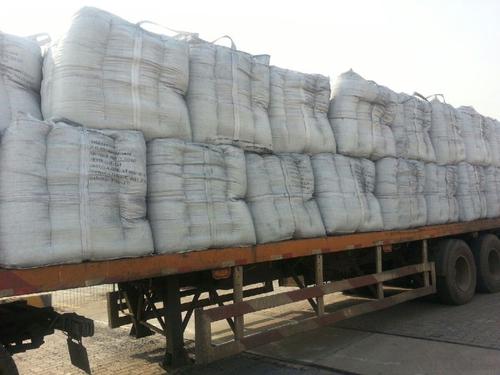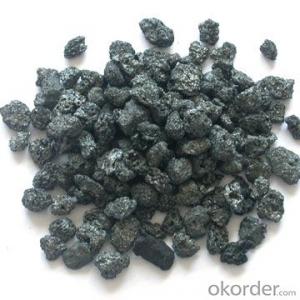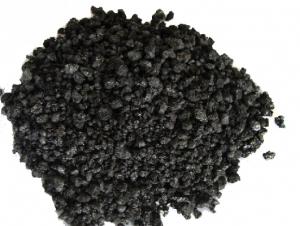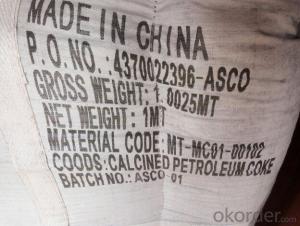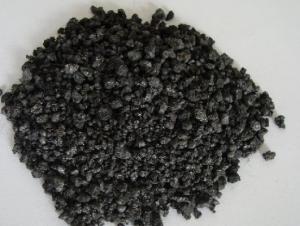Calcined Peroleum Coke with FC 98.5% S 0.55%max
- Loading Port:
- Tianjin
- Payment Terms:
- TT OR LC
- Min Order Qty:
- 20 m.t.
- Supply Capability:
- 2000 m.t./month
OKorder Service Pledge
OKorder Financial Service
You Might Also Like
Packaging & Delivery
25kgs/50kgs/1ton per bag or as buyer's request
Calcined Petroleum Coke is a critical ingredient in the production of Metallurgy and chemical industrial ,it can increase the used quantity of Scrap steel and reduce the quantity of Scrap iron, or use no Scrap iron at all, the calcined petroleum coke has follow properties: high absorptive character, no residue will be left and save production cost.
User : Calcined Petroleum Coke comes from delayed coke which extracted from oil refinery. Although Calcined Petroleum Coke contains a little bit higher level of sulfur and nitrogen than pitch coke, the price advantage still makes it widely used during steel-making and founding as a kind of carbon additive/carburant.
Standard Sizes (Granulometry):
0-4 mm, 0.5-3 mm, 0-25 mm, 1-4 mm, 2-8 mm We also supply as per customer's requirement.
General Specification of Calcined Anthracite:
| FC % | 98.5 | 98.5 | 98.5 | 99 |
| ASH % | 0.8 | 0.8 | 0.8 | 0.5 |
| V.M. % | 0.7 | 0.7 | 0.7 | 0.5 |
| S % | 0.5 | 0.55 | 0.7 | 0.5 |
| MOISTURE % | 0.5 | 0.5 | 0.5 | 0.5 |
Picture of CPC/ Calcined Petroleum Coke
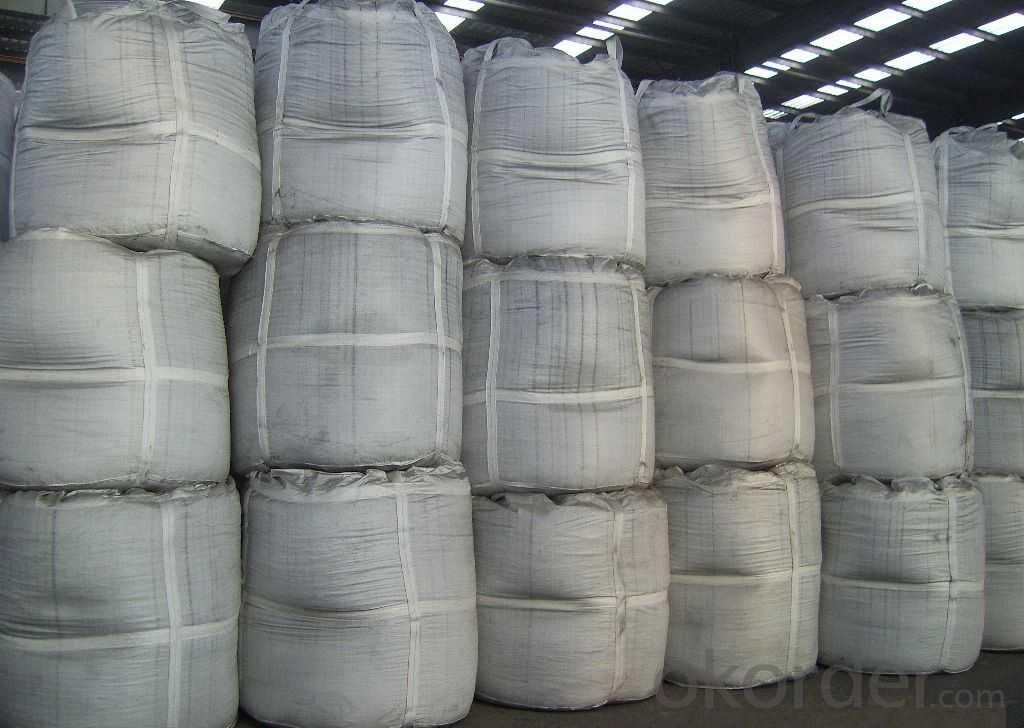
- Q: How does carbon dioxide affect global warming?
- Global warming is caused by carbon dioxide, one of the main greenhouse gases. When carbon dioxide is released into the atmosphere, it traps heat from the sun and prevents it from escaping into space. This leads to a rise in the Earth's overall temperature, a phenomenon known as the greenhouse effect. The Earth's atmosphere acts like the walls of a greenhouse, trapping heat and warming the planet. Human activities, such as burning fossil fuels, deforestation, and industrial processes, have significantly increased the amount of carbon dioxide in the atmosphere. These activities have released large amounts of carbon dioxide that would have otherwise remained underground for millions of years. As a result, the concentration of carbon dioxide in the atmosphere has reached levels not seen in hundreds of thousands of years. The increase in carbon dioxide levels intensifies the greenhouse effect and worsens global warming. Rising temperatures have negative effects on the Earth's climate system, including the melting of polar ice caps and glaciers, which leads to rising sea levels. This poses a threat to coastal communities and low-lying areas, increasing the risk of flooding and erosion. Additionally, global warming disrupts weather patterns, resulting in more frequent and severe extreme weather events like hurricanes, droughts, and heatwaves. Moreover, global warming impacts ecosystems and biodiversity. Many species are unable to adapt to rapid temperature changes, resulting in habitat loss and an increased risk of extinction. Coral reefs, for instance, are highly sensitive to temperature changes and are experiencing widespread bleaching events due to warmer ocean temperatures. Efforts are being made to reduce greenhouse gas emissions and mitigate the effects of carbon dioxide on global warming. Measures such as transitioning to renewable energy sources, improving energy efficiency, reforesting, and implementing sustainable practices are being taken to curb carbon dioxide emissions and lessen the impacts of global warming.
- Q: Why can carbon fiber in addition to static electricity ah?
- Carbon fiber is a conductive substance, static electricity can not accumulate. Therefore, in the production of cloth, some of the anti - static agent, processing clothes can be anti-static. People who work at gas stations must pass on antistatic clothing so that electrical sparks from static electricity do not explode.
- Q: What are the benefits of carbon-neutral technologies?
- Carbon-neutral technologies have numerous benefits that make them a vital solution in combating climate change and creating a sustainable future. Firstly, these technologies help to reduce greenhouse gas emissions, particularly carbon dioxide, which is the primary contributor to global warming. By transitioning to carbon-neutral technologies, we can significantly decrease our carbon footprint and mitigate the harmful effects of climate change. Secondly, carbon-neutral technologies promote energy efficiency and resource conservation. Many of these technologies, such as renewable energy sources like solar and wind power, harness natural resources that are infinite and readily available. This reduces our reliance on finite fossil fuels, which not only helps to protect the environment but also reduces the volatility of energy prices. Furthermore, embracing carbon-neutral technologies can lead to improved air quality and public health. Traditional energy sources like coal and oil contribute to air pollution and have detrimental health effects on humans, such as respiratory issues and cardiovascular diseases. By transitioning to cleaner technologies, we can reduce air pollution and improve the quality of life for individuals and communities. In addition, carbon-neutral technologies can stimulate economic growth and create new job opportunities. The development, installation, and maintenance of renewable energy infrastructure require skilled workers, leading to job creation and economic development. This transition can also reduce dependency on imported energy sources, leading to greater energy independence and national security. Lastly, by adopting carbon-neutral technologies, we can demonstrate global leadership and contribute to international efforts to combat climate change. Countries that embrace these technologies become role models for others and encourage global cooperation in reducing greenhouse gas emissions. In conclusion, the benefits of carbon-neutral technologies are vast and multidimensional. They not only help mitigate climate change and reduce greenhouse gas emissions but also promote energy efficiency, improve air quality, stimulate economic growth, and contribute to global efforts in creating a sustainable future.
- Q: How does carbon affect the formation of earthquakes?
- Carbon does not directly affect the formation of earthquakes. Earthquakes are caused by the movement of tectonic plates and the release of accumulated stress in the Earth's crust. Carbon, however, can indirectly influence the frequency and intensity of earthquakes through human activities such as mining and fracking, which can trigger seismic events in certain circumstances.
- Q: I want to know why the ATP in the five carbon sugar is a DNA RNA??
- ATP (adenosine-triphosphate) Chinese name three phosphate adenosine, also called ATP (adenosine three phosphate), referred to as ATP, which A said adenosine, T said the number is three, P said that the phosphate group, connecting three phosphate groups. An adenosine ribose adenine nucleoside by connection formation.If it is deoxyribonucleic acid, it is called three phosphate adenine nucleoside, or dATP
- Q: What are the consequences of increased carbon emissions on human migration patterns?
- Increased carbon emissions have significant consequences on human migration patterns. One of the most prominent effects is the exacerbation of climate change, leading to more frequent and intense natural disasters such as hurricanes, floods, and droughts. These extreme weather events can devastate communities, destroy infrastructure, and disrupt livelihoods, forcing people to migrate in search of safer and more stable environments. Rising sea levels, another consequence of carbon emissions, pose a significant threat to coastal regions and island nations. As sea levels continue to rise, low-lying areas become more prone to flooding and coastal erosion, making them uninhabitable. This displacement of populations, commonly referred to as climate refugees, can lead to mass migrations, putting additional strain on resources and infrastructure in destination areas. Moreover, carbon emissions contribute to changes in temperature and precipitation patterns, which can have a profound impact on agricultural activities. Shifts in growing seasons, increased frequency of droughts or floods, and the spread of pests and diseases can negatively affect crop yields and food security. This disruption in the availability of food and resources can push vulnerable populations to migrate in search of better livelihoods and food sources. The consequences of increased carbon emissions on human migration patterns also extend to health issues. Climate change can lead to the spread of diseases, such as malaria and dengue fever, as well as worsen air pollution, exacerbating respiratory problems. These health risks can force individuals and communities to relocate to areas with better healthcare infrastructure and conditions. In summary, increased carbon emissions have wide-ranging consequences on human migration patterns. The intensification of climate change, rising sea levels, disruptions to agriculture, and health risks all contribute to the displacement of populations, creating a need for individuals and communities to seek safer and more stable environments. Addressing carbon emissions and mitigating climate change is essential to minimize the negative impacts on human migration and ensure a sustainable future.
- Q: Is badminton all good as carbon or aluminum carbon? Does carbon fiber on the Internet mean total carbon?
- Products using what material is an important factor to determine its price under the table, can let you understand the properties of several materials and approximate cost: the hardness of the material strength shock probably cost RMB $/KG high strength carbon fiber carbon fiber (HighModulusGraphite) 874157 (Graphite/ Carbon) 58445 (Aluminum) 24115 Aluminum Alloy wood (wood) 11104 must pay attention to in the choice of the racket, don't put the whole aluminum frame carbon rod racket mistaken for full carbon badminton racket. General note the label on the racket, should be able to distinguish, if not sure, I have three methods that can be used, one hand touch frame Aluminum Alloy good thermal conductivity due to the frame model is cool and the carbon frame is warm. But look at the groove on the racket frame, the aluminum frame is concave inside the shallow arc, and the carbon frame is an inner concave trapezoid. Three is to feel the weight, the aluminum frame's racket head is obviously biased. As the transition from aluminum frame to full carbon product, I feel that the price is high and the performance is low, it is not a good choice.
- Q: What are the effects of carbon emissions on the stability of peatlands?
- Carbon emissions have significant effects on the stability of peatlands. Increased levels of carbon dioxide in the atmosphere contribute to global warming, which in turn accelerates the decomposition of organic matter in peatlands. This decomposition releases even more carbon dioxide, creating a positive feedback loop that further exacerbates climate change. Additionally, rising temperatures and changing precipitation patterns can lead to the drying out of peatlands, making them more prone to wildfires. These fires release massive amounts of carbon dioxide into the atmosphere, further contributing to climate change. Overall, carbon emissions threaten the stability of peatlands by accelerating their degradation and releasing large amounts of greenhouse gases.
- Q: How does carbon affect the formation of hurricanes?
- Carbon does not directly affect the formation of hurricanes, as their development is primarily influenced by factors such as warm ocean temperatures, atmospheric instability, and moisture content. However, carbon emissions and climate change can indirectly impact hurricanes by contributing to rising sea levels, which can exacerbate storm surge flooding during a hurricane event. Additionally, some studies suggest that climate change may lead to more intense hurricanes in the future, although the exact relationship between carbon and hurricane intensity is still an active area of research.
- Q: How is carbon used in water filtration systems?
- Carbon is used in water filtration systems as a filter medium or adsorbent. It effectively removes impurities, such as chlorine, volatile organic compounds (VOCs), and other contaminants, by adsorbing them onto its porous surface. This process helps improve the taste, odor, and overall quality of drinking water.
Send your message to us
Calcined Peroleum Coke with FC 98.5% S 0.55%max
- Loading Port:
- Tianjin
- Payment Terms:
- TT OR LC
- Min Order Qty:
- 20 m.t.
- Supply Capability:
- 2000 m.t./month
OKorder Service Pledge
OKorder Financial Service
Similar products
Hot products
Hot Searches


